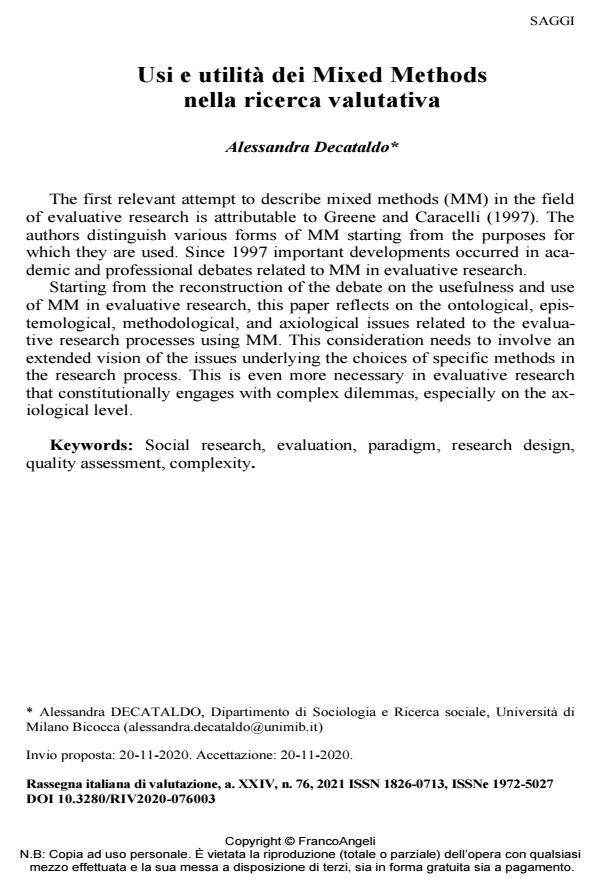Usi e utilità dei Mixed Methods nella ricerca valutativa
Journal title RIV Rassegna Italiana di Valutazione
Author/s Alessandra Decataldo
Publishing Year 2021 Issue 2020/76
Language Italian Pages 20 P. 33-52 File size 321 KB
DOI 10.3280/RIV2020-076003
DOI is like a bar code for intellectual property: to have more infomation
click here
Below, you can see the article first page
If you want to buy this article in PDF format, you can do it, following the instructions to buy download credits

FrancoAngeli is member of Publishers International Linking Association, Inc (PILA), a not-for-profit association which run the CrossRef service enabling links to and from online scholarly content.
The first relevant attempt to describe mixed methods (MM) in the field of evaluative research is attributable to Greene and Caracelli (1997). The authors distinguish various forms of MM starting from the purposes for which they are used. Since 1997 important developments occurred in academic and professional debates related to MM in evalu-ative research. Starting from the reconstruction of the debate on the usefulness and use of MM in evaluative research, this paper reflects on the ontologi-cal, epistemological, methodological, and axiological issues related to the evaluative research processes using MM. This consideration needs to involve an extended vision of the issues underlying the choices of specific methods in the research process. This is even more necessary in evaluative research that constitutionally engages with complex di-lemmas, especially on the axiological level.
Keywords: Social research, evaluation, paradigm, research design, quality assessment, complexity
- L'Agenda Digitale Europea: il punto sulle strategie e gli investimenti nel campo della valutazione Ida Cortoni, Valeria Pandolfini, in RIV Rassegna Italiana di Valutazione 85/2024 pp.145
DOI: 10.3280/RIV2023-085008
Alessandra Decataldo, Usi e utilità dei Mixed Methods nella ricerca valutativa in "RIV Rassegna Italiana di Valutazione" 76/2020, pp 33-52, DOI: 10.3280/RIV2020-076003